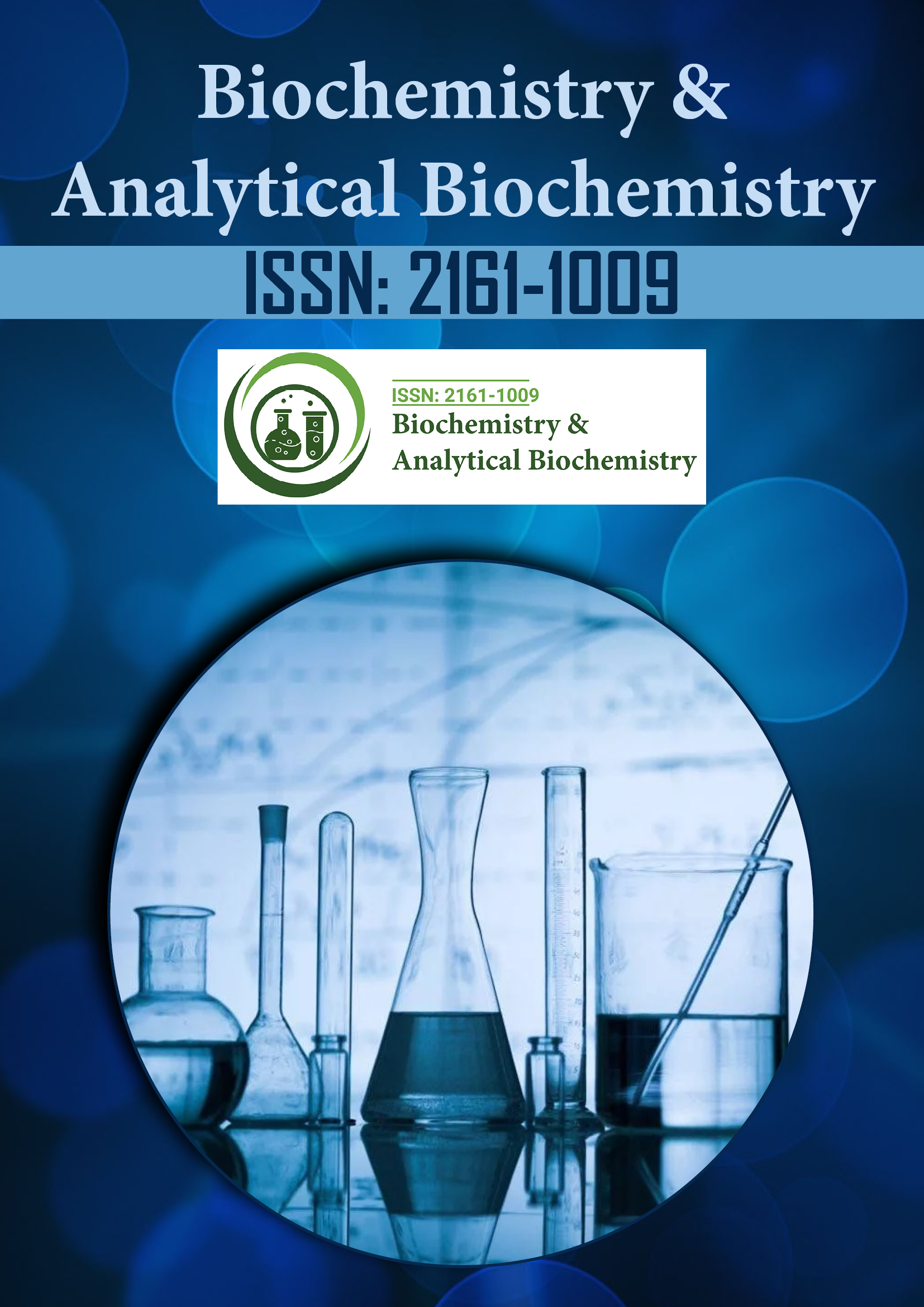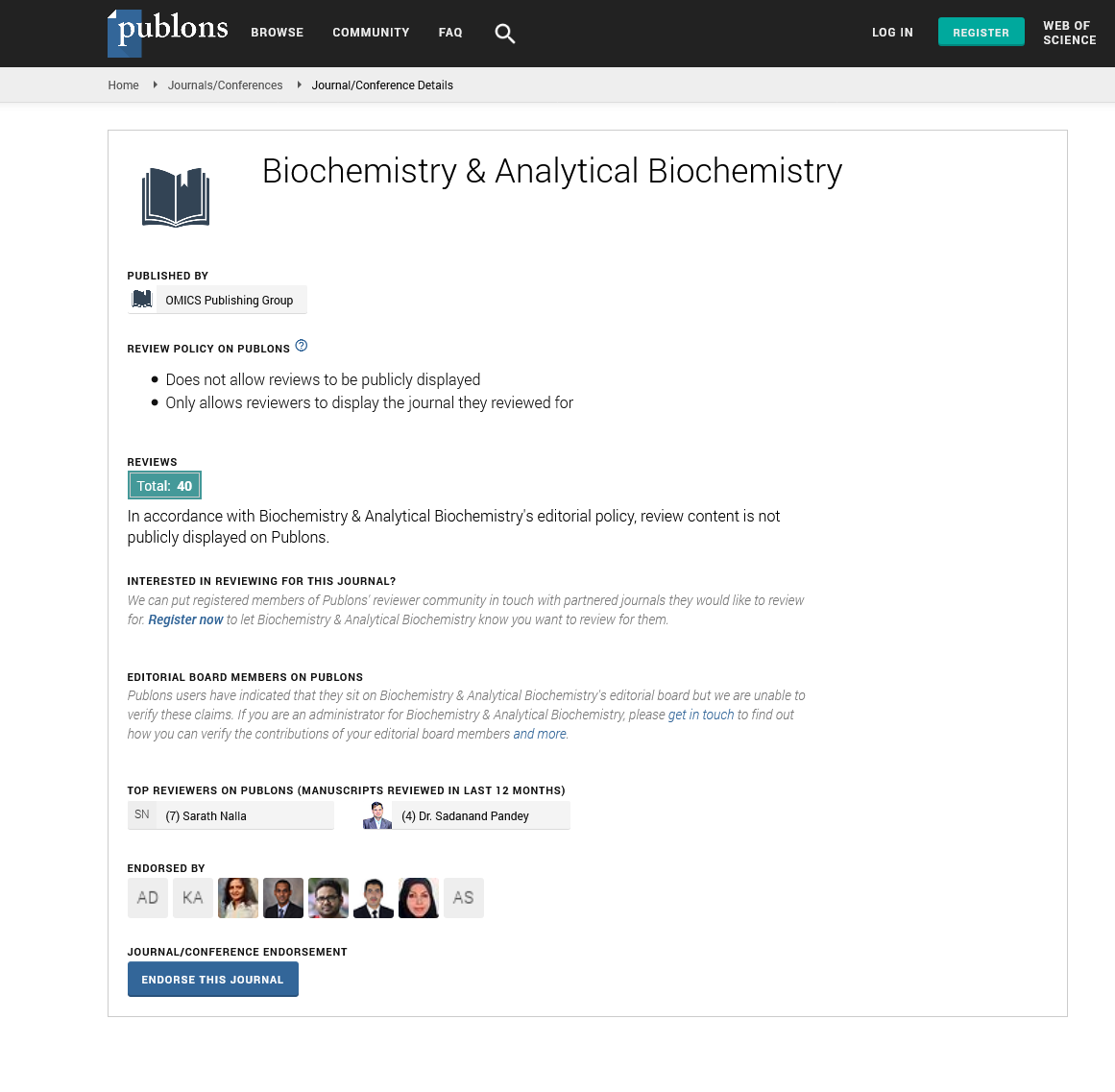Indexed In
- Open J Gate
- Genamics JournalSeek
- ResearchBible
- RefSeek
- Directory of Research Journal Indexing (DRJI)
- Hamdard University
- EBSCO A-Z
- OCLC- WorldCat
- Scholarsteer
- Publons
- MIAR
- Euro Pub
- Google Scholar
Useful Links
Share This Page
Journal Flyer

Open Access Journals
- Agri and Aquaculture
- Biochemistry
- Bioinformatics & Systems Biology
- Business & Management
- Chemistry
- Clinical Sciences
- Engineering
- Food & Nutrition
- General Science
- Genetics & Molecular Biology
- Immunology & Microbiology
- Medical Sciences
- Neuroscience & Psychology
- Nursing & Health Care
- Pharmaceutical Sciences
Commentary - (2025) Volume 14, Issue 2
Advances in Enzyme Engineering for Industrial Biocatalysis
Priya Sharma*Received: 30-May-2025, Manuscript No. BABCR-25-29495; Editor assigned: 02-Jun-2025, Pre QC No. BABCR-25-29495 (PQ); Reviewed: 16-Jun-2025, QC No. BABCR-25-29495; Revised: 23-Jun-2025, Manuscript No. BABCR-25-29495; Published: 30-Jun-2025, DOI: 10.35248/2161-1009.25.14.579
Description
Enzyme engineering has emerged as one of the most transformative disciplines in modern biochemistry, with profound implications for industrial biotechnology. Enzymes are nature’s catalysts, capable of accelerating biochemical reactions with high specificity and efficiency under mild conditions. While naturally occurring enzymes are extraordinarily powerful, their application in large-scale industrial processes often requires optimization to withstand extreme environments such as high temperature, high pressure, or exposure to organic solvents. Through advances in enzyme engineering, scientists have developed new strategies to improve stability, catalytic efficiency, and substrate specificity, thereby expanding the scope of industrial biocatalysis.
Directed evolution mimics the process of natural selection by generating libraries of enzyme variants through random mutagenesis and recombination, followed by screening for desirable traits. This method does not require complete knowledge of enzyme structure and has led to the discovery of enzymes with novel or enhanced functions. Rational design, by contrast, relies on detailed structural and mechanistic knowledge of enzymes. By analyzing the active site and conformational dynamics, researchers introduce specific mutations predicted to improve performance. Increasingly, hybrid strategies that combine both approaches are being adopted, allowing scientists to achieve greater efficiency while minimizing trial-and-error.
The industrial applications of engineered enzymes are vast. In pharmaceuticals, engineered enzymes enable stereoselective synthesis of complex molecules, ensuring high purity and reducing production costs. In the food industry, engineered amylases and proteases improve texture, flavor, and shelf-life of products. In detergents, proteases and lipases with enhanced stability function effectively in alkaline conditions and high temperatures, meeting consumer demands for powerful cleaning. Biofuels represent another critical application, with cellulases and hemicellulases engineered to efficiently break down lignocellulosic biomass into fermentable sugars. This innovation supports the global shift toward renewable energy. Recently, engineered enzymes have also been developed to degrade synthetic polymers such as Polyethylene Terephthalate (PET), offering a biochemical solution to plastic pollution.
Analytical biochemistry plays a critical role in enzyme engineering. High-throughput screening platforms are essential for identifying promising variants among thousands of enzyme mutants. Techniques such as microfluidics, fluorescence-based assays, and mass spectrometry allow rapid characterization of catalytic activity, stability, and specificity. Structural biology techniques such as X-ray crystallography and cryo-electron microscopy further inform rational design, while computational modeling and molecular dynamics simulations help predict the impact of mutations. The integration of machine learning into enzyme engineering is accelerating progress even further, as algorithms analyze large datasets to predict beneficial mutations and design enzyme variants with desired properties.
Challenges remain in balancing stability and activity, as mutations that improve stability sometimes reduce catalytic efficiency. Achieving optimal expression levels of engineered enzymes in host organisms such as Escherichia coli or yeast also requires careful optimization of codons, promoters, and chaperones. Moreover, scaling up enzyme production for industrial use demands robust fermentation processes and costeffective purification methods. Despite these challenges, progress continues at an impressive pace, driven by the urgent need for sustainable and eco-friendly industrial processes.
The environmental benefits of enzyme engineering are significant. Unlike traditional chemical catalysts, enzymes function under mild conditions, reducing the need for harsh chemicals, high energy input, and toxic byproducts. This aligns with the principles of green chemistry, promoting sustainable development and reducing industrial carbon footprints. For example, engineered nitrilases enable the synthesis of pharmaceutical intermediates without toxic metal catalysts, while engineered oxidases facilitate environmentally friendly bleaching processes in the textile and paper industries.
Looking forward, enzyme engineering will likely converge with synthetic biology and metabolic engineering, enabling the construction of novel biosynthetic pathways. By integrating engineered enzymes into microbial hosts, researchers can design cell factories capable of producing valuable compounds such as bio-based plastics, specialty chemicals, and advanced pharmaceuticals. The increasing use of artificial intelligence and quantum computing promises to revolutionize enzyme design, allowing predictions at atomic-level accuracy and vastly expanding the diversity of accessible catalytic functions.
Citation: Sharma P (2025). Advances in Enzyme Engineering for Industrial Biocatalysis. Biochem Anal Biochem. 14:579.
Copyright: © 2025 Sharma P. This is an open access article distributed under the terms of the Creative Commons Attribution License, which permits unrestricted use, distribution, and reproduction in any medium, provided the original author and source are credited.

